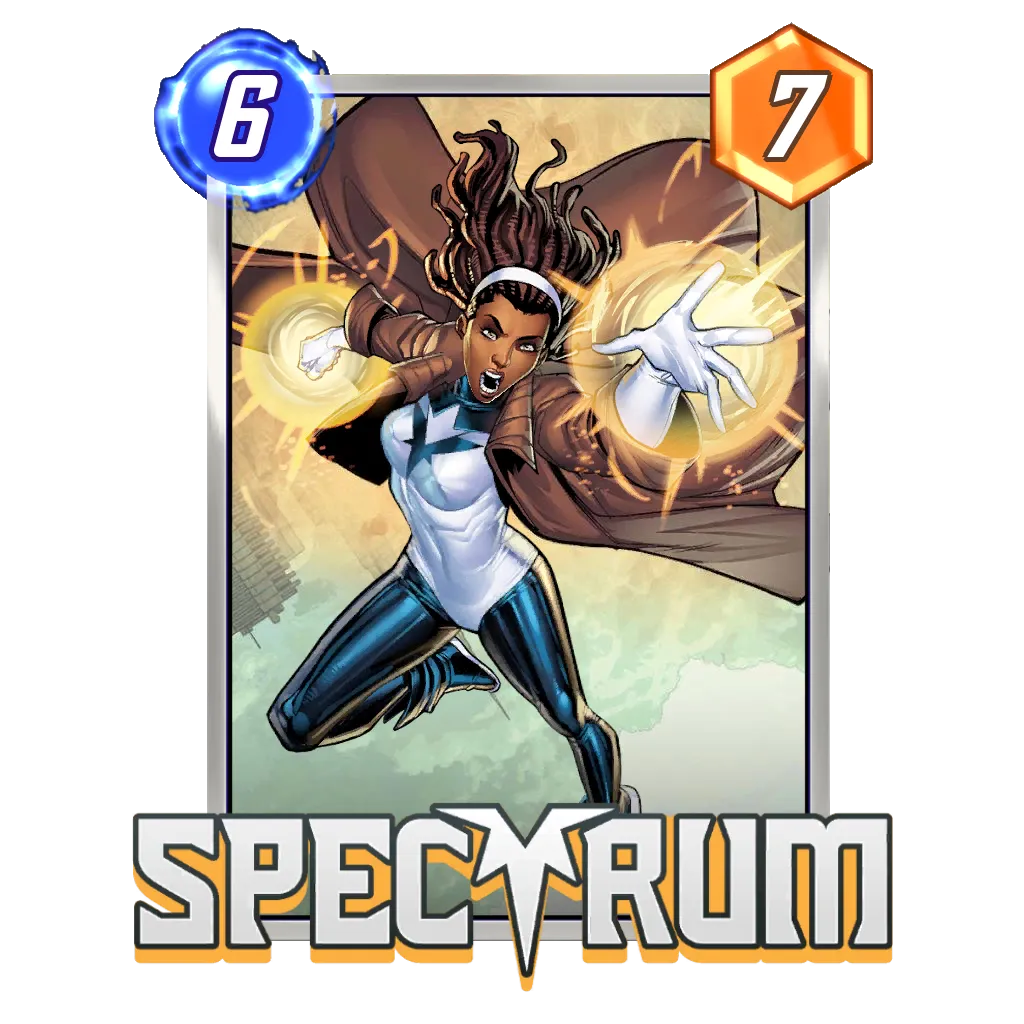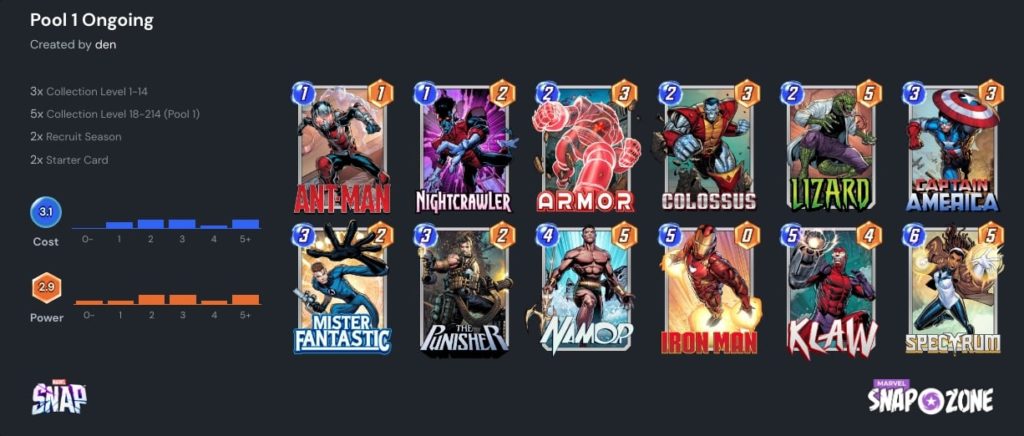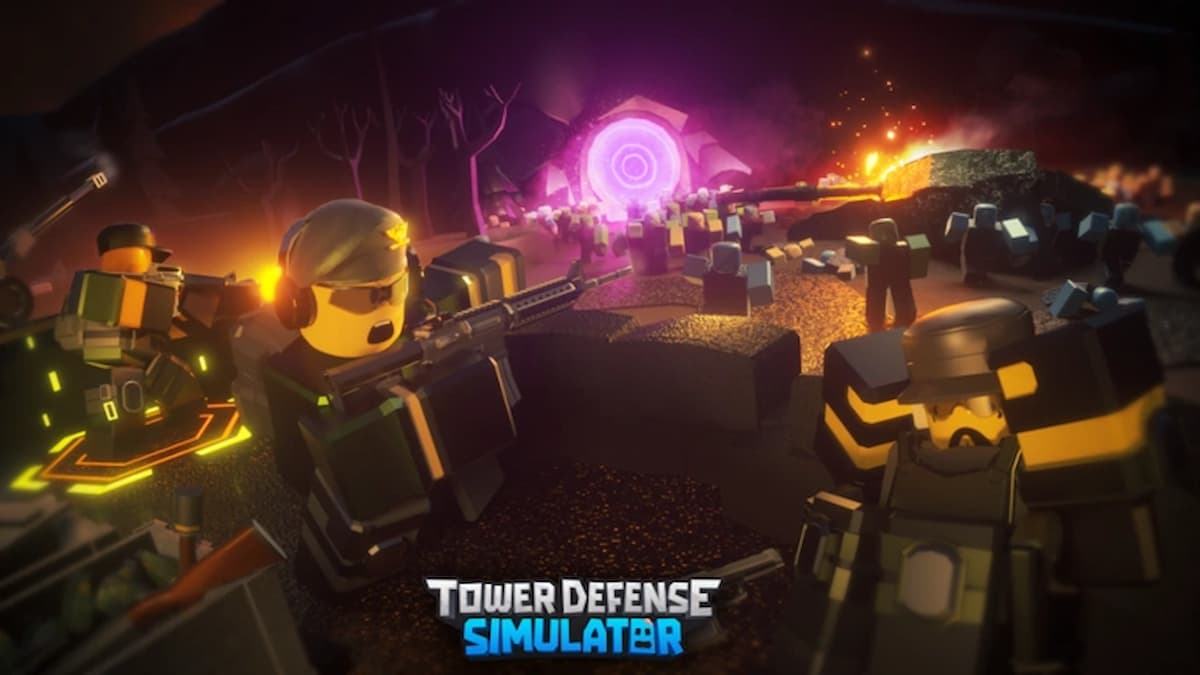Marvel Snap is a quick online card game that takes advantage of the expansive Marvel universe and the digital design space to create plenty of mechanically unique cards and strategies. With only six turns, each card in a Marvel Snap deck must fill a specific role and be useful. There’s no room for dead cards and that keeps each game engaging.
It’ll take a while to build a deep collection and take advantage of every card Marvel Snap has to offer, but there are some powerful cards and decks players have access to early in the game. One card that will be a major finisher for newer players in Spectrum. Her ability is the perfect finisher for an Ongoing deck, one of the main archetypes new players will discover when starting Marvel Snap.
Spectrum card abilities in Marvel Snap, explained

Spectrum is a six-cost card with five power. Its effect is “On Reveal: Give your Ongoing cards +2 Power.” This card is available early in the game, found in the introductory collection levels 1-14. It will be an early powerhouse that players will have available and can slot into some solid entry-level Ongoing lists.
According to snap.fan, win rate statistics show a solid 59.11 percent win rate when played. It’s not surprising as Spectrum is a six-cost finisher that is designed as a major payoff for playing cards with Ongoing.
Related: Every card in Marvel Snap | All card costs, power, and abilities
Strategy for Spectrum decks in Marvel Snap
The general strategy for a deck looking to maximize Spectrum will revolve around the Ongoing mechanic. Cards with Ongoing provide persistent effects as long as they are on a location. It’s a versatile archetype that doesn’t necessarily require any specific combos. This nonlinear approach makes it easy to try out new cards in decks and helps make deck construction simple.
Spectrum is a turn-six play, so her part of the game plan is pretty simple. Just slam Spectrum on turn six and let her five power and ability do the work. The key to a successful deck built around Spectrum is how you set her up. It’s a great surprise piece that can win locations you were previously losing. It’s good to play a balanced plan threatening all three locations so her +2 buff can have a wide spread and punish the opponent if they commit hard to only two locations.
It’s possible to run Spectrum as a top-end piece in a go-wide list that wants to flood the battlefield with cards. Spectrum is able to maximize the total power gained through this strategy. Using cards like Ant-Man, Kazar, and Angela can be great secondary payoffs for a go-wide Ongoing strategy. She’s also useful in a curve-out list that just wants to slam an at-cost threat every turn. Mister Fantastic, The Punisher, and Nightcrawler are useful pieces in this style of deck.
Best combos with Spectrum
A nice way to ensure Spectrum gets maximum value is through an effective turn-five play. This will set the table and allow Spectrum to enter a location and immediately have an impact. Some five-cost cards that pair well with Spectrum are Blue Marvel, Professor X, and Klaw.
Blue Marvel is an excellent card that buffs other cards on the field +1 power. It’s another source of indirect power to all three locations. Following up Blue Marvel with Spectrum will supercharge each location and likely win two locations and the match. Professor X is a nice turn-five play to take advantage of indirectly applying power to a location. He can come down and shut down a location that is closely contested. Spectrum’s ability to give most, or all, of your cards +2 will help win that location while the opponent can’t play any cards there on turn six. Klaw continues the indirect theme by applying six power to the location to his right. With his decent four-power body Klaw can help apply pressure to two locations.
Pool One Ongoing with Spectrum

This is an excellent starter deck for Spectrum that is made up of entirely pool-one cards. It’ll be an easy deck to construct and get right into the action. Spectrum is the only six-cost card and is one of the big finishers in the list. The list is fairly straightforward. Look to play a card on each turn and use good Marvel Snap fundamentals. There are This list can take several interesting lines depending how the cards come to you.
Ant-Man is a good piece that rewards you for filling up a location. This happens often with how the first four turns can go. One good line is to put two cards on a location with Ant-Man then on the final turn move Nightcrawler to his location, getting a surprise Ant-Man buff to close out the match. It’s a small play that can eke out a location when need be. Captain America is another card that works well with Ant-Man, providing a buff to all your cards at a location. Captain America is likely to swing a location in your favor on turn three and allow you to commit further resources to a second area.
Mister Fantastic is a powerful three-cost card that can give power to each location if it’s played in the center. Similar to Klaw and Spectrum, he’s an effective way to attack locations without having to play a card there. Namor is useful for playing to a third location and forcing the opponent to commit some resources there.
The Punisher is in the list as a way to counter swarming lists that want to fill up each location. Colossus and Armor can help fight against lists that are focused on destroying your cards.
Professor X and Storm Control

This list is built around preventing players from playing cards to a location, then using Blue Marvel and Spectrum to continue to apply power while the opponent is unable to. Spectrum’s role is as a top-end finisher that’s invaluable for its ability to give power to locations without needing to be played there.
The ideal plan for this list is to use Storm on turn three to flood a location, then follow that up with Jessica Jones on the same location. For turns five and six, no cards can be played to that location. This will trigger Jessica Jones’ ability turning her into an eight-power card. Combined with early-game plays of an Armor or Lizard to this location and that’s 15 power to a location, more than enough o secure it. If the location is still close, that’s where Blue Marvel and Spectrum come in to swing it in your favor.
Professor X has a similar role. Play this card on turn five to lock down the location he’s played at. Then slam a Spectrum on turn six to buff all your cards at the location to close out the match.
How to counter Spectrum decks
Spectrum lists generally aren’t very complicated and that allows different archetypes to present difficult scenarios that a Spectrum list isn’t well equipped to deal with. One way to deal with a list that relies on Spectrum as a late-game boost is to destroy its cards. Using cards like Shang Chi and Killmonger will disrupt the deck’s strategy. Overall, the Destroy mechanic is powerful and has unpredictable lines of play that a Spectrum deck can’t interact with. It’ll be hard to set up the right board state to allow Spectrum to win the game when the opponent is playing a nonlinear deck.
Move lists are similar in their ability to react to the telegraphed setup that Spectrum decks use. They can effectively pressure each location and mitigate the impact that Spectrum’s buff will have on the match.
Overall, the key to countering a Spectrum list is a reactive, nonlinear plan that can shift its strategy based on how you’re setting the table for Spectrum’s grand entrance.













Published: Dec 28, 2022 05:34 pm